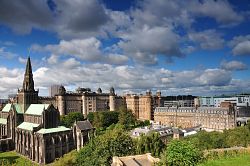

A blueprint on how Glasgow's city centre will double in size over the next 15 years is due to go out for public consultation next week.
The draft City Centre Living Strategy (CCLS) aims to establish a city centre population of 40,000 by 2035, living in “empowered and socially cohesive neighbourhoods”.
The CCLS highlights the need to find "productive outcomes" for vacant commercial space, with a particular focus on upper floors, and the provisions of a quality city centre environment that is "cleaner, greener, more sustainable and better connected".
The draft action plan focuses on specific city centre districts as well as proposing infrastructure and environmental improvements.
Research and public engagement by Savills over the past couple of years has identified a lack of residential availability and choice, as well as unmet demand in the city's central area. The greatest demand for housing is in the Merchant City, Broomielaw and Sauchiehall districts.
Glasgow does have advantages over other city centres in terms of attracting a wide demographic to live there, thanks to its atmosphere, vibrancy and the scale of its shopping and leisure facilities.
However, there are also problems meeting supply and demand for residential development, such as a high proportion of listed buildings, which are potentially difficult and expensive to convert, and pre-1945 properties.
Meanwhile, in a separate but related development, the so-called Strategic Development Framework (SDFs) for Govan, Patrick and the Clyde corridor are due to be submitted to Scottish Ministers as supplementary guidance to the city development plan.
The latter SDF provides a spatial vision for the river corridor over the next 30 years, and has identified three main priorities:
The consultation opens on 29 November for 10 weeks.
For more information on this subject, see: